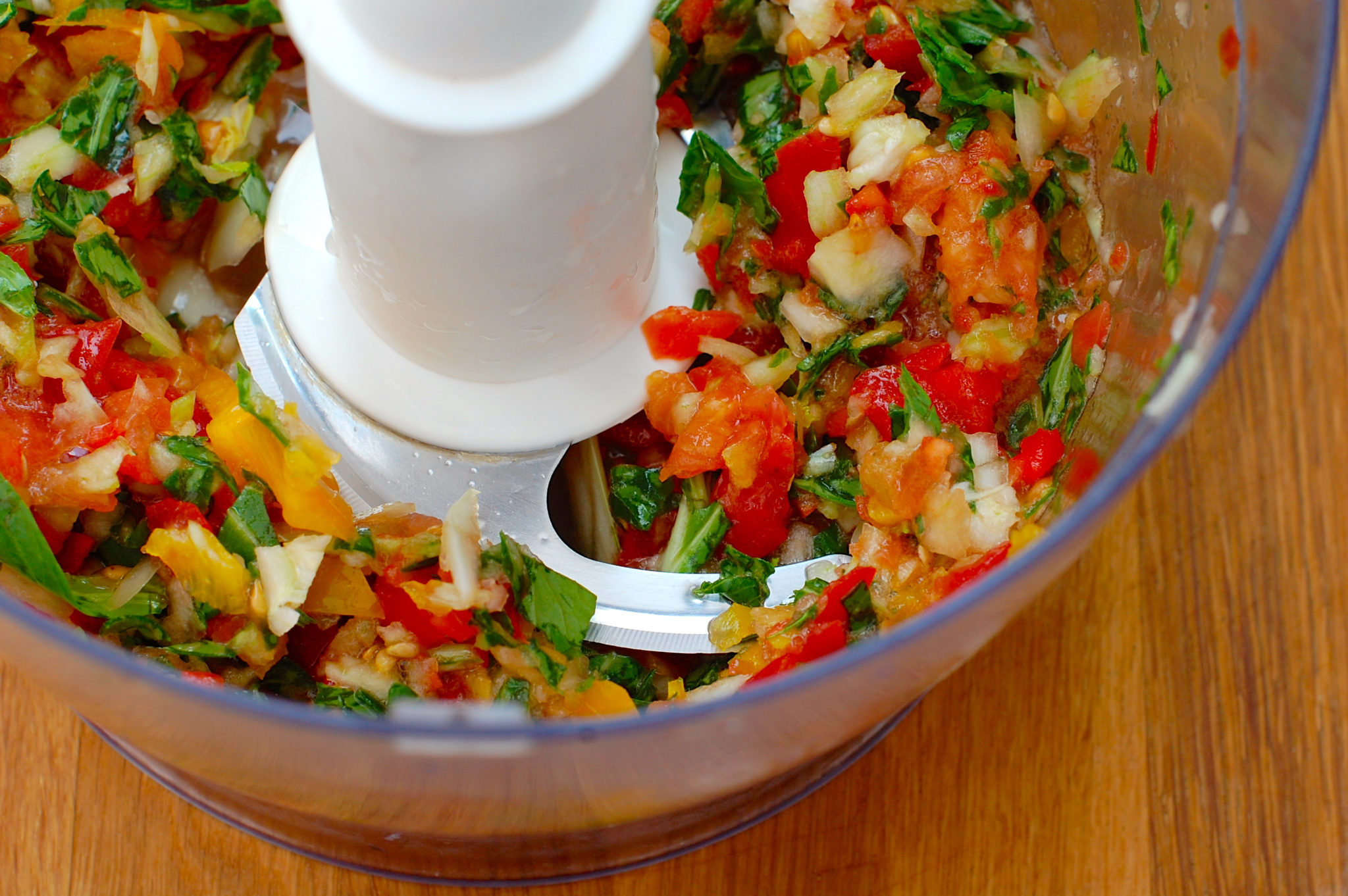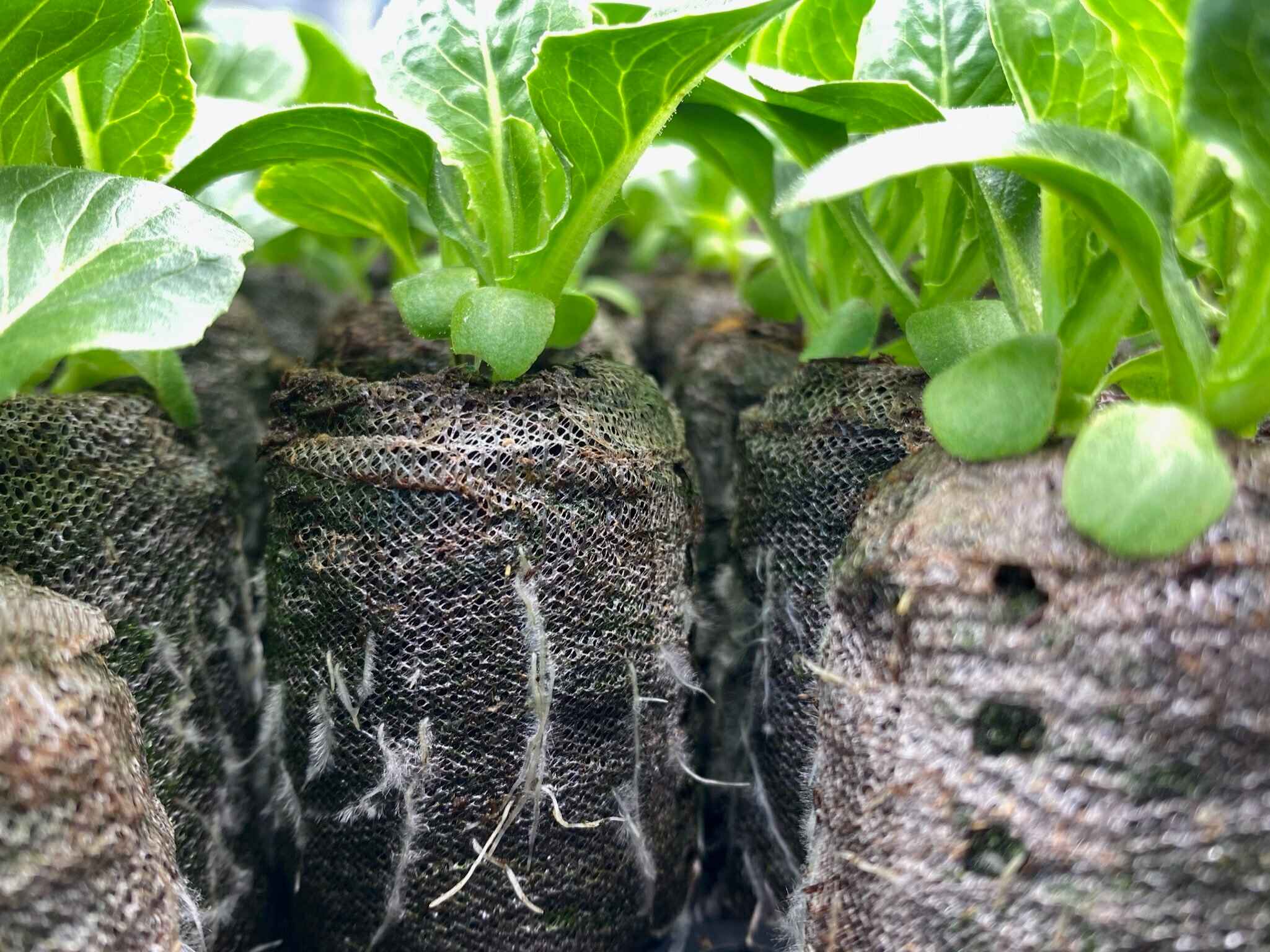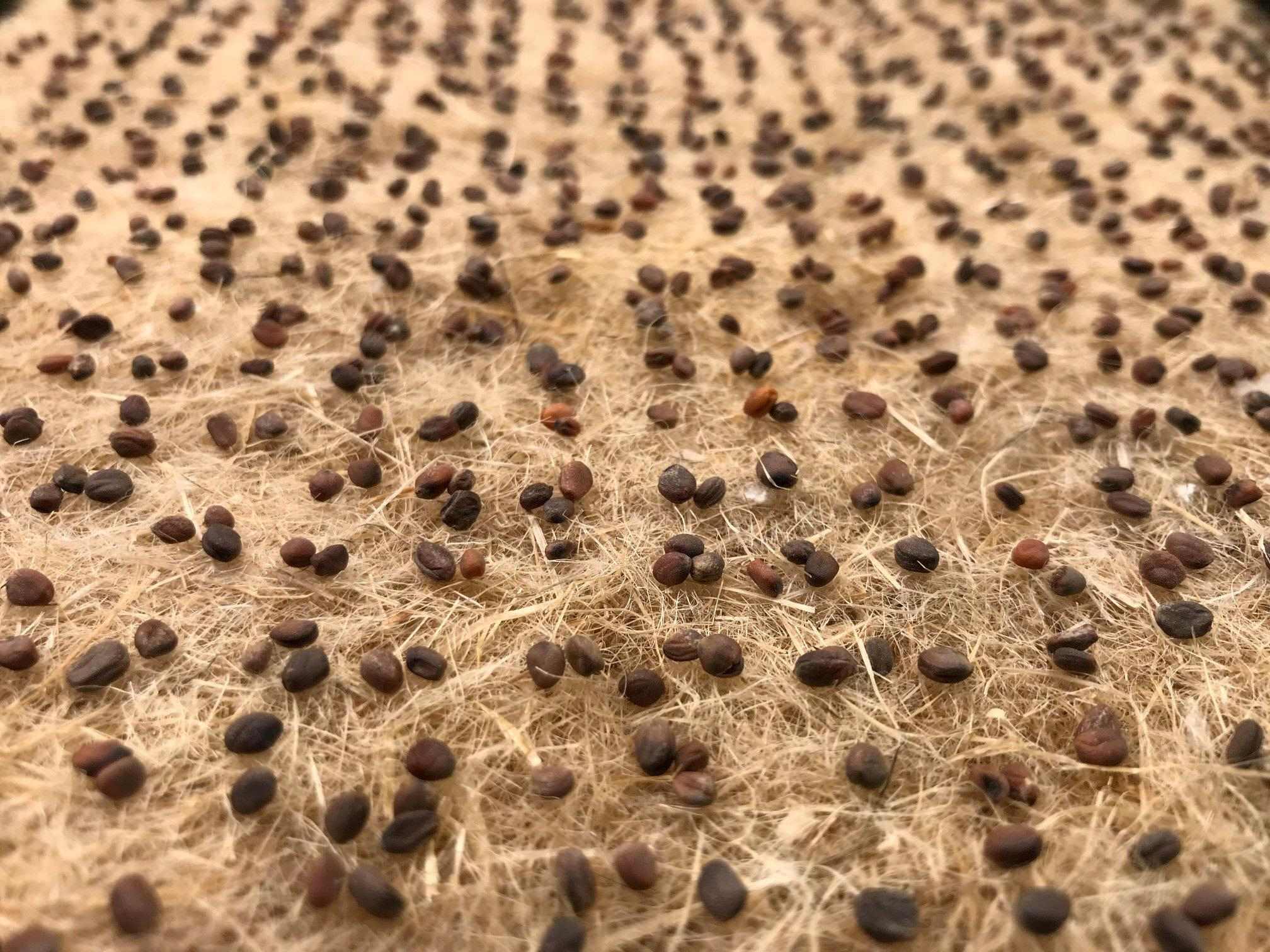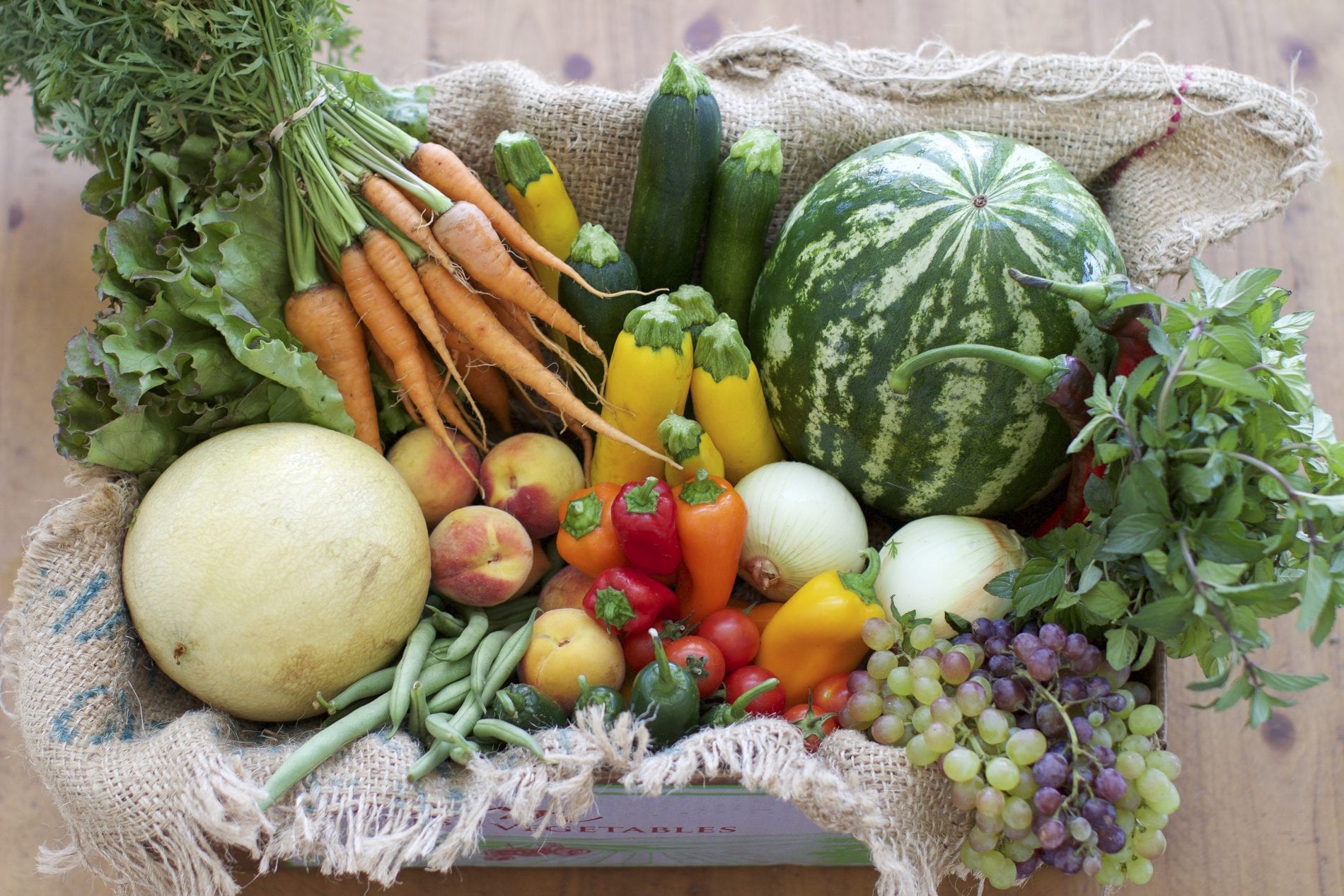Home>Gardening News and Trends>Latest News>What Vegetables Are Used In Hibachi


Latest News
What Vegetables Are Used In Hibachi
Published: October 5, 2023
Discover the latest news on hibachi and learn about the variety of vegetables commonly used in this traditional Japanese cooking style.
(Many of the links in this article redirect to a specific reviewed product. Your purchase of these products through affiliate links helps to generate commission for Chicagolandgardening.com, at no extra cost. Learn more)
Table of Contents
Introduction
Hibachi cooking has gained popularity worldwide for its unique and interactive culinary experience. Originating from Japan, hibachi grills are known for their high heat and fast cooking technique. But what sets hibachi apart is the assortment of fresh and flavorful ingredients used in the dishes.
With a focus on quality and taste, hibachi chefs carefully select a variety of vegetables to complement the proteins and create a vibrant and delicious meal. These vegetables not only add color and texture but also contribute to the overall taste and nutritional value of the dish.
In this article, we will explore some of the popular vegetables used in hibachi cooking. From onions to zucchini, mushrooms to spinach, we will delve into the versatility and characteristics of these vegetables. So, whether you are a hibachi enthusiast or simply curious about what goes into these delightful dishes, let’s dive into the world of hibachi vegetables.
But before we go any further, it’s essential to understand the cooking style of hibachi. Often confused with teppanyaki, which is also a popular Japanese cooking style, hibachi involves grilling food on an open flame. The word “hibachi” refers to the traditional charcoal brazier used for heating purposes. However, modern hibachi grills use gas or electric heat sources for convenience and safety.
Hibachi restaurants typically feature large communal tables surrounding a griddle, where skilled chefs entertain guests with impressive knife skills, cooking techniques, and a flair for showmanship. Along with meats, seafood, and poultry, a wide array of vegetables take center stage on the hibachi grill, elevating the flavor profiles and ensuring a well-rounded meal.
Without further ado, let’s explore the enticing world of hibachi vegetables and discover their unique contributions to the culinary art of hibachi cooking.
Hibachi Cooking Style
The hibachi cooking style is not just about grilling vegetables; it is an art form that combines skillful cooking techniques with entertaining performance. The hibachi grill, typically a flat-top griddle, allows for precise control over the heat and facilitates quick cooking.
One of the defining features of hibachi cooking is its emphasis on high heat. The intense flames sear the vegetables, creating a caramelized exterior while keeping the interior tender and juicy. This quick cooking method helps the vegetables retain their natural flavors and vibrant colors.
Hibachi chefs are adept at showcasing their knife skills, effortlessly slicing and dicing vegetables with precision and speed. They create a visual feast for the eyes as they flip, chop, and toss vegetables with flair. The sizzling sounds, the aromatic scents, and the captivating movements all add to the dining experience.
Moreover, hibachi chefs often engage in interactive theatrics, juggling utensils, tossing ingredients in the air, and even creating fiery displays. This lively and entertaining performance is a hallmark of hibachi dining, enchanting guests of all ages.
Hibachi cooking also pays attention to the overall presentation of the dish. Chefs arrange the vegetables in visually appealing patterns on the grill, creating a feast for both the eyes and the taste buds. The combination of colors, textures, and flavors gives each dish a distinct and inviting appeal.
The unique combination of high heat, skilled techniques, and entertaining performances makes hibachi cooking a memorable experience. It is not just a meal; it is a sensory journey that engages all the senses and leaves a lasting impression.
Now that we have a better understanding of the hibachi cooking style, let’s explore the popular vegetables that are integral to creating these delectable hibachi dishes.
Popular Vegetables Used in Hibachi
When it comes to hibachi cuisine, a wide variety of vegetables are used to create flavorful and visually appealing dishes. These vegetables not only add a burst of color to the hibachi grill but also provide a range of textures and flavors that complement the proteins being cooked alongside them. Let’s explore some of the most popular vegetables used in hibachi cooking:
1. Onion: Onions are a staple in hibachi dishes, known for their distinctive flavor and ability to enhance the taste of other ingredients. They add a subtle sweetness and a hint of caramelization, balancing out the savory flavors on the grill.
2. Zucchini: Zucchini is a versatile vegetable that works well on the hibachi grill. Its mild flavor and tender texture make it a popular choice. When grilled, zucchini develops a slightly smoky taste with a hint of sweetness.
3. Mushrooms: Mushrooms, such as shiitake or button mushrooms, are commonly used in hibachi cooking. They bring an earthy flavor and a meaty texture to the dish, making them a fantastic vegetarian option. The umami-rich mushrooms nicely complement the flavors of other ingredients.
4. Carrots: Carrots add a vibrant pop of color to the hibachi grill. They bring a slightly sweet and crunchy element to the dish, enhancing both the taste and visual appeal. Grilled carrots offer a wonderful balance of natural sweetness and smokiness.
5. Broccoli: Broccoli is a cruciferous vegetable that adds a burst of vibrant green to hibachi dishes. Its slightly bitter and nutty flavors become mellow and slightly sweet when grilled. Broccoli also provides a satisfying crunch that adds texture to the overall dish.
6. Bell Peppers: Bell peppers, available in various colors, are a popular vegetable used in hibachi cooking. They add a beautiful splash of vibrant hues while offering a crisp and juicy texture. The peppers bring a mildly sweet and refreshing taste to the grilled dishes.
7. Bean Sprouts: Bean sprouts are commonly used in hibachi cooking as a fresh and crunchy ingredient. These tiny sprouts provide a delicate texture and a subtle nutty flavor, enhancing the overall balance of the dish.
8. Cabbage: Cabbage is often used as a base for hibachi dishes. Its sturdy texture holds up well to high heat, and it adds a sweet and earthy taste once grilled. Cabbage also brings a lovely crunch that complements the other ingredients on the hibachi grill.
9. Garlic: Garlic is a flavorful ingredient that adds depth and complexity to hibachi dishes. When grilled, garlic develops a mellow and slightly sweet taste, infusing the dish with its aromatic essence.
10. Spinach: Spinach is a versatile leafy green that is commonly used in hibachi cooking. It wilts quickly on the grill, becoming tender with a mild and slightly earthy flavor. Spinach adds a touch of freshness and vibrant green color to the overall dish.
These are just a few examples of the popular vegetables used in hibachi cooking. Each vegetable brings its own unique characteristics, contributing to the overall taste, texture, and visual appeal of the hibachi dishes. The combination of these vegetables with proteins like meat, seafood, or tofu creates a well-rounded and satisfying hibachi meal.
Onion
Onions are a staple vegetable in hibachi cooking and play a vital role in adding flavor and depth to the dishes. They are known for their strong aroma and distinct taste, which can range from sweet to pungent, depending on the variety.
When cooked on the hibachi grill, onions undergo a magical transformation. The high heat caramelizes the natural sugars present in the onion, resulting in a savory, slightly sweet flavor. The caramelization process also gives the onions a beautiful golden brown color, adding visual appeal to the dishes.
One of the key benefits of using onions in hibachi cooking is their ability to enhance the taste of other ingredients. They have a unique umami quality that brings out the flavors of proteins like steak, chicken, and shrimp. Onions also provide a delightful contrast of texture, with the exterior becoming soft and slightly crispy while the interior retains a tender yet slightly crunchy consistency.
In hibachi restaurants, skilled chefs showcase their knife skills by slicing and dicing onions with precision and speed. This not only adds a visual element to the cooking process but also allows for even and consistent cooking of the onions on the grill. The aromatic scent of sizzling onions fills the air, tantalizing the senses and building anticipation for the flavorful dishes to come.
Onions are also incredibly versatile in hibachi cooking. They can be added to the grill alongside other vegetables, creating a medley of flavors and textures. Some hibachi chefs even use onions to create a bed on the grill, allowing the savory juices from the proteins to mix with the caramelized onions, resulting in a rich and flavorful sauce.
In addition to their taste and texture contributions, onions offer numerous health benefits. They are packed with essential nutrients like vitamins C and B6, fiber, and antioxidants. Onions are also known for their anti-inflammatory properties and potential immune-boosting effects.
Whether added to hibachi fried rice, stir-fried noodles, or grilled alongside meats and other vegetables, onions are a key ingredient that adds depth, flavor, and nutritional value to hibachi dishes. Their versatility, distinct taste, and ability to elevate the overall dining experience make them an essential component in the art of hibachi cooking.
In the next section, we will explore another popular vegetable used in hibachi that is loved for its versatility and mild flavor: zucchini.
Zucchini
Zucchini is a versatile vegetable that is widely used in hibachi cooking. It is loved for its mild flavor, tender texture, and ability to easily absorb the flavors of other ingredients. When grilled on the hibachi, zucchini develops a slightly smoky taste with a hint of sweetness.
One of the reasons zucchini is popular in hibachi dishes is its ability to complement a wide range of proteins. Whether paired with steak, chicken, shrimp, or tofu, zucchini adds a delicious and nutritious element to the meal. Its mild flavor allows the taste of the protein to shine while providing a subtle and refreshing contrast.
The texture of grilled zucchini is a delight in itself. It retains a slight crunch on the exterior while softening on the inside. This balance of textures adds depth and interest to the overall dish. The green color of zucchini also adds vibrancy and visual appeal to hibachi dishes, enhancing the aesthetic appeal of the plate.
One of the advantages of using zucchini is its versatility in cooking. It can be sliced into rounds, cut into half-moons, or even spiralized into zoodles (zucchini noodles). This flexibility allows for a variety of cooking styles to suit different hibachi dishes. Zucchini is also a great option for vegetarian or vegan hibachi meals, as it provides a satisfying and nutritious vegetable component.
From a nutritional standpoint, zucchini is a low-calorie vegetable that offers several health benefits. It is an excellent source of vitamin C, which supports immune health, and vitamin A, which promotes healthy vision and skin. Zucchini is also rich in fiber, which aids in digestion and supports a healthy gut.
When preparing zucchini for the hibachi grill, it is important to ensure even cooking and prevent it from becoming overly soft or mushy. The high heat of the hibachi grill helps bring out the zucchini’s natural flavors while retaining its desired texture. Grilled zucchini can be enjoyed as a standalone side dish or incorporated into hibachi stir-fries, adding a refreshing and nutritious element to the overall meal.
In the next section, we will explore another versatile vegetable used in hibachi cooking: mushrooms.
Mushrooms
Mushrooms are a popular vegetable used in hibachi cooking, known for their unique flavor and meaty texture. They bring an earthy and umami-rich taste to hibachi dishes, enhancing the overall depth and complexity of flavors.
When cooked on the hibachi grill, mushrooms undergo a transformation that intensifies their flavor. The heat helps to release their natural moisture, resulting in a caramelization process that creates a rich, savory taste. Grilled mushrooms develop a slightly crispy exterior while maintaining a moist and tender interior, providing a delightful contrast of textures.
There are various types of mushrooms used in hibachi cooking, including shiitake, button, and portobello mushrooms. Each variety offers its own distinct flavor profile, allowing for a diverse range of taste experiences. Shiitake mushrooms, for example, have a smoky and earthy taste, while button mushrooms have a milder and slightly nutty flavor.
The meaty texture of mushrooms makes them an excellent ingredient for vegetarian or vegan hibachi meals. They can serve as a suitable protein substitute, adding substance and nutrients to the dish. Mushrooms also work well in combination with other proteins, enhancing the overall taste and texture of the hibachi meal.
In addition to their taste and texture contributions, mushrooms offer a range of health benefits. They are low in calories and fat while being rich in vitamins, minerals, and antioxidants. Mushrooms are also a good source of dietary fiber, which promotes healthy digestion and may help with weight management.
In hibachi cooking, mushrooms are often sliced or quartered before being placed on the grill. This allows for even cooking and ensures that the flavors are evenly distributed throughout the dish. Their versatility allows them to be used in a variety of hibachi preparations, including stir-fries, rice dishes, and grilled vegetable medleys.
Mushrooms are not only delicious and nutritious but also add a visual element to hibachi dishes. Their earthy brown hues and distinctive shapes create an appealing contrast against the vibrant colors of other vegetables and proteins on the grill.
Whether you’re a mushroom enthusiast or simply looking to explore new flavors, incorporating mushrooms into hibachi dishes can elevate your dining experience. The rich taste, meaty texture, and health benefits of mushrooms make them a fantastic addition to the hibachi grill.
In the next section, we will discover another vegetable that adds a burst of color and crunch to hibachi dishes: carrots.
Carrots
Carrots are a popular vegetable used in hibachi cooking, known for their vibrant color, sweet flavor, and satisfying crunch. They add a delightful pop of color to hibachi dishes and contribute to both the visual appeal and taste of the meal.
When grilled on the hibachi, carrots undergo a transformation that intensifies their natural sweetness. The high heat caramelizes the sugars in the carrots, resulting in a rich and slightly caramelized flavor. This caramelization process adds depth and complexity to the taste, enhancing the overall flavor profile of the dish.
In addition to their taste, carrots bring a satisfying crunch to hibachi dishes. The texture of grilled carrots strikes a balance between firmness and tenderness, providing a pleasant mouthfeel. The crunchiness of carrots adds a refreshing contrast to the other cooked ingredients on the grill, elevating the overall texture of the dish.
Carrots are incredibly versatile in hibachi cooking. They can be sliced, chopped, or even julienned into thin strips, depending on the desired presentation and cooking method. Their versatility allows for various cooking techniques, from stir-frying to grilling, incorporating carrots into a wide range of hibachi recipes.
In addition to their taste and texture contributions, carrots offer numerous health benefits. They are rich in vitamins, particularly vitamin A, which is essential for eye health. Carrots are also a good source of dietary fiber, which aids in digestion and promotes a healthy gut.
When preparing carrots for the hibachi grill, it is essential to ensure that they are evenly sliced or chopped to ensure even cooking. The high heat of the hibachi grill brings out the carrots’ natural sugars and intensifies their flavor while retaining their desired texture.
In hibachi cooking, carrots can be used in various ways. They can be added to stir-fries, rice dishes, or grilled vegetable medleys. Some hibachi chefs even create impressive carrot decorations by skillfully carving the vegetables into intricate shapes, adding an artistic element to the presentation of the dish.
Whether you enjoy them for their taste, texture, or nutritional benefits, carrots are a fantastic addition to hibachi dishes. Their vibrant color, sweet flavor, and satisfying crunch enhance the overall dining experience and contribute to the well-roundedness of hibachi cuisine.
In the next section, we will explore another popular vegetable used in hibachi cooking: broccoli.
Broccoli
Broccoli is a versatile vegetable that is commonly used in hibachi cooking. With its vibrant green color and distinctive taste, broccoli adds both visual appeal and a range of flavors to hibachi dishes.
When grilled on the hibachi, broccoli undergoes a transformation that enhances its natural flavors. The high heat caramelizes the edges of the florets, resulting in a slightly charred and smoky taste. The grilling process also helps to retain the crunchiness of the stalks while allowing the florets to become tender and juicy.
One of the benefits of using broccoli in hibachi dishes is its nutritional value. Broccoli is packed with essential vitamins and minerals, including vitamin C, vitamin K, and folate. It is also high in fiber, which aids in digestion and promotes a healthy gut. Including broccoli in hibachi dishes adds a nutritious and wholesome element to the meal.
In terms of taste, broccoli brings a slightly bitter and earthy flavor to hibachi dishes. This distinctive taste complements the savory flavors of other ingredients and adds depth to the overall flavor profile. The texture of grilled broccoli adds interest to the dish, with the tender florets and crispy stalks providing a delightful contrast.
Broccoli is a versatile vegetable that can be used in various hibachi preparations. It can be stir-fried, grilled, or even incorporated into fried rice or noodle dishes. Its ability to retain its shape and texture when cooked makes it a great addition to hibachi stir-fries, adding color, flavor, and a satisfying crunch.
When preparing broccoli for the hibachi grill, it is important to ensure that the stalks and florets are evenly cut for even cooking. This allows the broccoli to cook evenly and retain its desired texture. Whether you prefer large florets or smaller pieces, properly preparing the broccoli ensures optimal flavor and presentation on the hibachi grill.
In hibachi cooking, broccoli can be combined with other vegetables, proteins, and flavorful sauces, creating a well-rounded and satisfying dish. Its versatility, nutritional benefits, and distinctive taste make it a favorite for hibachi enthusiasts.
In the next section, we will discover another popular vegetable used in hibachi cooking that adds a burst of color and a sweet crunch to the dishes: bell peppers.
Bell Peppers
Bell peppers are a colorful and versatile vegetable commonly used in hibachi cooking. With their vibrant hues and crisp texture, bell peppers add visual appeal and a burst of flavor to hibachi dishes.
When grilled on the hibachi, bell peppers undergo a transformation that enhances their natural sweetness. The high heat caramelizes the sugars in the peppers, resulting in a slightly smoky and sweet taste. The grilling process also softens the texture of the peppers, making them tender and juicy.
One of the reasons bell peppers are popular in hibachi dishes is their ability to add a refreshing and crisp texture. The crunchiness of the peppers provides a satisfying contrast to the other ingredients on the grill, creating a delightful mouthfeel.
In terms of taste, bell peppers bring a mild sweetness and a subtle hint of bitterness to hibachi dishes. They have a refreshing and slightly tangy flavor that adds depth to the overall taste profile. The combination of their taste and texture makes bell peppers a versatile vegetable that complements a variety of proteins and other vegetables.
Bell peppers are not only delicious but also packed with nutrients. They are an excellent source of vitamins, especially vitamin C and vitamin A. They are also rich in antioxidants, which help support the immune system. Including bell peppers in hibachi dishes adds a nutritional boost and enhances the overall health benefits of the meal.
In hibachi cooking, bell peppers can be used in a variety of ways. They can be sliced, chopped, or even stuffed, depending on the desired presentation and cooking method. Their vibrant colors – red, green, yellow, and orange – add visual appeal and make hibachi dishes look even more enticing.
When grilling bell peppers on the hibachi, it is important to achieve an even char and maintain the desired texture without overcooking. This can be achieved by adjusting the heat and ensuring that the peppers are evenly cut for uniform cooking. Whether used as a standalone side dish or incorporated into a stir-fry, grilled bell peppers add a vibrant and flavorful element to hibachi dishes.
Incorporating bell peppers into hibachi cooking not only adds color and texture to the dish but also contributes to the overall taste and nutritional value. Their versatility, crispness, and mild, sweet flavor make them a popular choice for hibachi enthusiasts.
In the next section, we will explore another vegetable used in hibachi cooking that brings a refreshing and crunchy element: bean sprouts.
Bean Sprouts
Bean sprouts are a popular vegetable used in hibachi cooking, known for their refreshing crunch and delicate flavor. These sprouts, derived from germinated mung beans, bring a unique texture and freshness to hibachi dishes.
When added to the hibachi grill, bean sprouts retain their crispness while gaining a slight char. The high heat quickly cooks the sprouts, maintaining their crunch and adding a subtle smoky flavor. The contrast between the tender center and the slightly caramelized exterior provides an enjoyable eating experience.
One of the key benefits of including bean sprouts in hibachi dishes is their ability to provide a refreshing and light element. They add a cooling factor to the overall dish, balancing out the rich and savory flavors of proteins and other ingredients on the grill. The crunchiness of bean sprouts also adds texture to the hibachi meal, providing a satisfying bite.
Bean sprouts are not only a tasty addition but also offer several health benefits. They are low in calories and packed with essential nutrients like vitamins C and K, as well as folate and fiber. Eating bean sprouts can support digestion, boost immunity, and promote healthy skin.
In hibachi cooking, bean sprouts can be incorporated into stir-fries, noodle dishes, or even used as a garnish. Their delicate flavor allows them to absorb the flavors of the other ingredients in the dish, enhancing the overall taste profile. Bean sprouts are often added towards the end of the cooking process to maintain their crispness and freshness.
When preparing bean sprouts for the hibachi grill, it is important to rinse and drain them thoroughly to remove any dirt or impurities. This ensures that they are clean and safe to eat. One can also trim any roots or ends before adding them to the grill.
Whether you’re a fan of their refreshing crunch or their nutritional benefits, bean sprouts are an excellent addition to hibachi dishes. Their delicate flavor, satisfying texture, and health-promoting properties make them a popular choice for hibachi enthusiasts.
In the next section, we will explore another vegetable used in hibachi cooking that provides both texture and flavor: cabbage.
Cabbage
Cabbage is a versatile vegetable that is widely used in hibachi cooking. With its robust leaves and slightly sweet taste, cabbage adds both texture and flavor to hibachi dishes.
When grilled on the hibachi, cabbage undergoes a transformation that enhances its natural sweetness and adds a touch of smokiness. The high heat caramelizes the sugars in the cabbage, yielding a slightly charred and savory taste. The grilling process also softens the leaves, creating a tender and slightly crunchy texture.
One of the advantages of using cabbage in hibachi dishes is its ability to withstand high heat. It holds up well on the grill and retains its shape, allowing for even cooking. Grilled cabbage adds a delightful texture and color to the dish, enhancing its visual appeal.
In terms of taste, cabbage brings a mildly sweet and earthy flavor to hibachi dishes. It balances out the savory flavors of other ingredients while adding a refreshing note to the overall taste profile. The combination of its taste and texture makes cabbage a versatile vegetable that complements a variety of proteins and other vegetables.
Cabbage is not only delicious but also highly nutritious. It is packed with essential vitamins, including vitamin C and vitamin K. It is also an excellent source of dietary fiber, which aids in digestion and promotes a healthy gut. Including cabbage in hibachi dishes adds a nutritional boost and enhances the overall health benefits of the meal.
In hibachi cooking, cabbage can be used in various ways. It can be shredded, chopped, or even used as a base for stir-fries and fried rice. The sturdy leaves and slightly crunchy texture of cabbage add substance to the dish and retain their shape during cooking.
When grilling cabbage on the hibachi, it is important to ensure that the leaves are evenly coated with oil to prevent them from sticking and promote even char. This ensures that the cabbage cooks evenly and maintains its desired texture.
Whether enjoyed as a standalone side dish or incorporated into a hibachi stir-fry, grilled cabbage adds a satisfying crunch and a mild sweetness to the overall dish. Its versatility, taste profile, and health benefits make cabbage an excellent choice for hibachi enthusiasts.
In the next section, we will explore another vegetable used in hibachi cooking that brings a distinct and pungent flavor: garlic.
Garlic
Garlic is a flavor powerhouse widely used in hibachi cooking. Known for its distinct aroma and pungent taste, garlic adds depth and complexity to hibachi dishes.
When grilled on the hibachi, garlic undergoes a transformation that mellows its sharpness and intensifies its flavors. The high heat caramelizes the natural sugars in garlic, resulting in a rich and slightly sweet taste. Grilled garlic develops a mellow and smoky flavor that adds depth to hibachi dishes.
One of the key benefits of using garlic in hibachi cooking is its ability to enhance the flavors of other ingredients. It has a unique umami quality that intensifies the taste and aroma of proteins, vegetables, and sauces on the grill. Garlic also contributes to the overall taste profile of the dish, adding a savory and aromatic note.
In addition to its taste contributions, garlic offers several health benefits. It is known for its antimicrobial and anti-inflammatory properties, as well as its potential immune-boosting effects. Garlic is also rich in vitamins and minerals, including vitamin C and manganese. Including garlic in hibachi dishes not only enhances their flavor but also adds a nutritional boost.
In hibachi cooking, garlic is often sliced or minced before being added to the grill. This allows the garlic to evenly distribute its flavors and aromas throughout the dish. The sizzling sound and enticing aroma of grilled garlic add to the overall sensory experience of hibachi dining.
Garlic can be used in a variety of ways in hibachi dishes. It can be added to stir-fries, fried rice, or marinades to infuse the flavors into the ingredients. Some hibachi chefs even create garlic-infused oils or sauces to further enhance the taste of the grilled dishes.
When grilling garlic on the hibachi, it is important to monitor its cooking time closely. Overcooked garlic can become bitter and lose its characteristic flavor. The ideal grilling time for garlic is until it becomes golden brown and aromatic, indicating that it has achieved the desired balance of flavors.
Whether enjoyed for its flavor, aroma, or health benefits, garlic is a prized ingredient in hibachi cooking. Its distinct taste and versatility make it an essential component in creating flavorful and memorable hibachi dishes.
In the next section, we will explore another vegetable used in hibachi cooking that brings a refreshing and nutritious element: spinach.
Spinach
Spinach is a versatile leafy green that is commonly used in hibachi cooking. With its vibrant color and mild flavor, spinach adds a fresh and nutritious element to hibachi dishes.
When grilled on the hibachi, spinach quickly wilts and develops a tender texture. The high heat causes the leaves to become soft and slightly charred, bringing out the natural sweetness of the spinach. The grilling process enhances the flavor of the spinach while retaining its vibrant green color.
One of the benefits of using spinach in hibachi dishes is its nutritional value. Spinach is packed with essential vitamins and minerals, including iron, vitamin C, and vitamin K. It is also rich in antioxidants, which help protect the body against oxidative stress. Adding spinach to hibachi meals boosts their nutritional content and contributes to a well-rounded dining experience.
In terms of taste, spinach has a mild and slightly earthy flavor. It complements the other ingredients on the grill without overpowering their flavors. Grilled spinach provides a subtle yet refreshing taste that adds depth to hibachi dishes.
In hibachi cooking, spinach can be used in various ways. It can be added to stir-fries, rice dishes, or even used as a bed for grilling other proteins or vegetables. The tender texture and delicate flavor of spinach make it a versatile ingredient that pairs well with a wide range of flavors and ingredients.
When grilling spinach on the hibachi, it is important to monitor its cooking time closely to prevent overcooking. The spinach should be grilled until it wilts and becomes soft, but not until it loses its bright green color or turns mushy. Properly grilled spinach adds a refreshing and nutritious element to the hibachi dish.
Whether enjoyed as a standalone side dish or incorporated into a hibachi stir-fry, grilled spinach provides a healthy and flavorful component to the meal. Its nutrient content, mild taste, and vibrant color make spinach a fantastic choice for hibachi enthusiasts looking to add a dose of freshness to their dishes.
In this article, we have explored a variety of popular vegetables used in hibachi cooking. From onions to zucchini, mushrooms to spinach, each vegetable contributes its own unique flavors, textures, and nutritional benefits. The combination of these vegetables enhances the taste and visual appeal of hibachi dishes, creating a dining experience that is both delicious and satisfying.
By exploring the world of hibachi vegetables, we gain a deeper appreciation for the art and skill involved in creating these flavorful dishes. Whether you are a hibachi enthusiast or simply curious about the ingredients used in hibachi cooking, we hope this article has provided insights and inspiration for your culinary adventures.
Happy grilling and bon appétit!
Conclusion
Hibachi cooking is a delightful culinary experience that combines skillful techniques, vibrant ingredients, and entertaining presentations. Throughout this article, we have explored a variety of popular vegetables used in hibachi cooking, each bringing its own unique flavors, textures, and nutritional benefits to the dishes.
From the savory sweetness of onions to the refreshing crunch of bean sprouts, each vegetable plays a crucial role in elevating the taste and visual appeal of hibachi dishes. Whether it’s the earthy taste of mushrooms or the tender-crisp texture of grilled broccoli, these vegetables contribute to a well-rounded and satisfying meal.
In addition to their taste contributions, these vegetables offer a range of health benefits. They are packed with essential vitamins, minerals, and antioxidants, making hibachi dishes not only delicious but also nutritious. The combination of these flavorful vegetables with proteins and other ingredients creates a balanced and wholesome dining experience.
Furthermore, hibachi cooking is not just about the food itself. It is a sensory journey that engages all the senses. The sizzling sounds, enticing aromas, and captivating performances of skilled hibachi chefs all contribute to the overall experience.
Whether you’re a hibachi enthusiast or someone curious about the world of hibachi vegetables, we hope this article has provided you with valuable insights and inspiration. The versatility, taste, and nutritional benefits of these vegetables make them an integral part of hibachi cuisine.
So, the next time you visit a hibachi restaurant or decide to try your hand at hibachi cooking, remember the importance of selecting fresh and vibrant vegetables. Embrace the art of grilling and enjoy the delightful flavors and textures these vegetables bring to your hibachi dishes.
We hope you embark on a flavorful culinary adventure and create unforgettable moments around the hibachi grill. Happy cooking and bon appétit!









